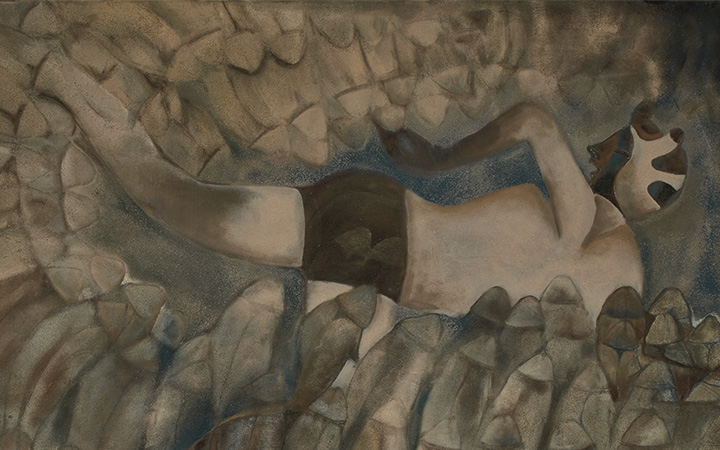Generación de la Ruptura: The Breakaway Generation
09/27/2016 General

Mexico’s revolution was a long internal struggle from 1910 until 1920, though conflicts continued into the early 1930s. Out of the hardships, Mexico formed a government based on a constitution that was echoing the voices of the past that cried out for equality and justice. Inspired by the revolution, a handful of artists began creating works that formed a visual tapestry, championing the heroes of the revolution, and glorifying Mexico’s rich cultural heritage. Because these artists chose to present their imagery in mural format, the participants in this movement are often referred to as the Mexican Muralists. The medium seemed in many ways the perfect blending of European and Pre-Columbian culture, both having murals as part of their narrative. José Clemente Orozco, David Alfaro Siqueiros and Diego Rivera were at the forefront of this movement.
In the decades that followed the revolution, many artists carried on the traditions of the Mexican Muralists, with themes of socio-political content, and expressing nationalist pride. To many of the younger artists, this was not the narrative that fit their inner voice. With much resistance from the art establishment, as well as the public at large, a new movement began to take root. This new group of artists became collectively known as Generación de la Ruptura (The Breakaway Generation).
La Ruptura in Mexico, like Abstract Expressionism in the United States, is a movement less about a thematic style, and more an association based on a common mindset. These artists set out to convey more personal ideas, and not nationalistic subject matter. Three artists associated with La Ruptura are Francisco Toledo, Gunther Gerzso and Pedro Coronel.
Francisco Toledo has built a body of work that brilliantly melds modernist concepts with realist visual and thematic reference to the ancient Zapotec civilization. Toledo was born in Oaxaca, Mexico and is a member of the Zapotec people, a culture that pre-dates the Aztec empire. His imagery often incorporates animal themes and ventures into Nagualism. Many pre-Columbian cultures believe some humans possess the gift of transforming into animals. These individuals are known as a Nagual. In this melding of European modernism with the arts of Pre-Columbian Central America, as well as parallels drawn between Nagualism and European Tonalist beliefs, Toledo creates a new dialogue all his own, expressing the voice of the melting pot of the modern day Americas.
Gunther Gerzso, a Mexican-born artist and son of a Hungarian father and German mother, had an interesting childhood. His father died before he was one year of age. His mother remarried and the family moved to Europe. They returned to Mexico, only to send Gunther to Switzerland in his early teens to live with his uncle. This shift in his life would prove crucial to the young artist’s future. His uncle, Dr. Hans Wendland, a noted art collector, introduced him to modernist artist, Paul Klee and well known set designer, Nando Tamberlani. The later had a strong influence on Gerzso, and he went on to have an accomplished career as a set designer when he returned to Mexico. His fine art painting was not as eagerly accepted. Working during the period of the Mexican Muralist generation and those like artists that followed, pure abstraction did not fit the tastes of the Mexican audience. The efforts of Generación de la Ruptura offered an area of support and comradery that the older artist gave in return. Some of the older generation of artist, such as Rufino Tamayo and Carlos Mérida also were in support of La Ruptura.
Pedro Coronel studied at Academia La Esmeralda for five years and took classes under artist Francisco Zúñiga. After he left the academy, he traveled to Europe where he furthered his studies with Constantine Brancusi and Victor Brauner. The influence from Brauner can clearly be seen in Coronel’s mature style. His works depict landscapes and figures broken down into large monochromatic geometric forms. His palette is often warm and vibrant.
In a search for self-expression, each new generation of artists has those pioneering souls who challenge the status quo. In an effort to find themselves, they often have to separate themselves from the past. But in art, as in life, ex nihilo nihil fit (nothing comes from nothing). Artists always build on what came before. Whether they find inspiration from the current or distant past, across the ocean or in their own back yard. How those influences are melded to better represent the personal ideas of the individual is where great artistic breakthroughs are found.
A selection of works by Francisco Toledo, Gunther Gerzso, Pedro Coronel and other Latin American artists will be offered in the November 1, 2016 sale of Post-War & Contemporary Art.
Above Images:
Lot 227 Francisco Toledo, Pescado Cabeza Grande (Benda Iquengola), 1975
Lot 245 Gunther Gerzso, Untitled, 1976
Lot 232 Pedro Coronel, El Hombre Mellado, 1964